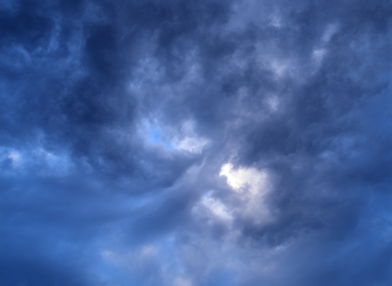 |
 |
| |||||
|
The Shiretoko Peninsula is a remote spot on the east coast of Hokkaido. It's probably the furthest we got from civilization; there are no roads all the way to the end of it, more than 600 bears make their home there (of which we saw two), and we had to spend the better part of a day driving to get to a city big enough to let us cash some traveler's checks that we should have cashed back in Asahikawa. We had a lot of time there; possibly too much, mostly because the hiking was more difficult than we expected and so we were a bit boxed in as a result. Still, it was an incredibly beautiful spot, and we'd highly recommend it for those who want to see the last vestiges of real wilderness in Japan. These first photos were taken on a short hike from the Shiretoko Nature Center north of Utoro; it was the only really easy hike we found there, a short jaunt out to a lighthouse and a waterfall. That really is water, and even a seagull, that you see behind those deer; this photo was taken pointing very nearly straight down, and we were expecting the deer to plummet to their deaths at any moment. 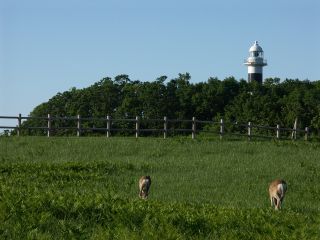 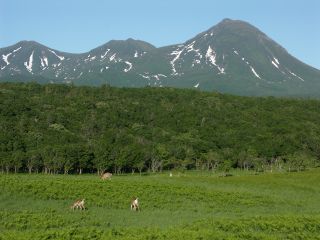 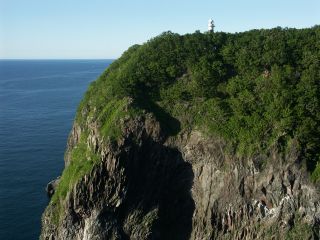 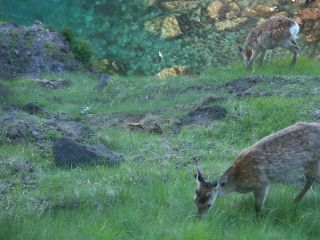 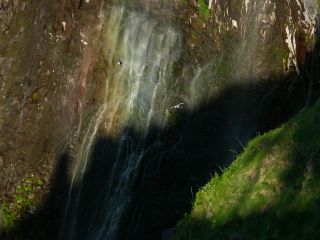 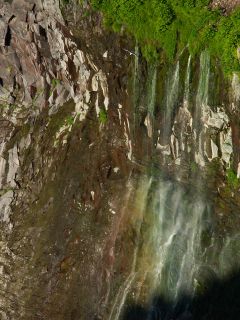 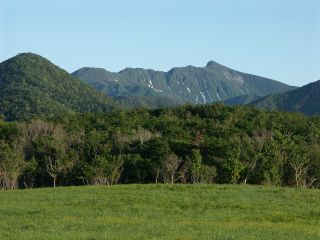 These were taken from the side of the road, close to sunset. Just a bit of alpenglow on the mountains.  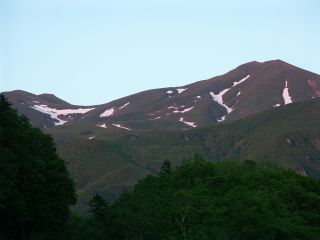 Now we're on a sort of a nature cruise that went from Utoro all the way to the end of the peninsula; the only way to get there is by boat, and we saw several fishing villages on the coast that were not connected by roads to the mainland. Amazing volcanic rock formations were everywhere, with water oozing right out of cracks in the rock to form waterfalls and cascades, and even Bryce Cayon style hoodoos eroded out of the rock in one spot. 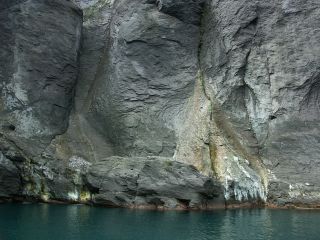 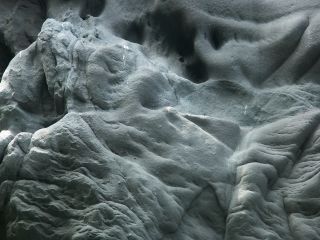 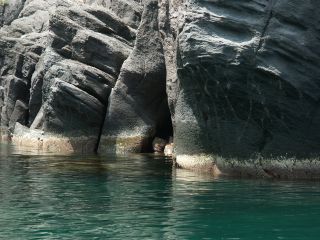 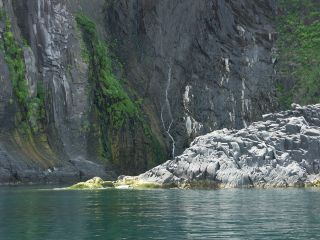  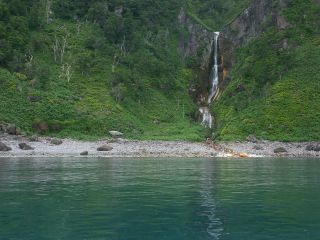 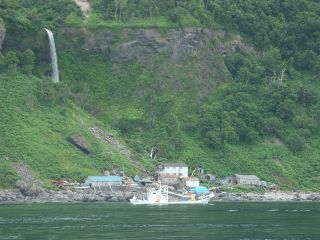 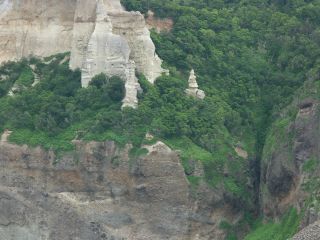 The land in the distance in the next photo is Kunashiri Island, claimed by Japan but controlled by Russia; it's not exactly the Russian mainland, but it's the closest I've ever been to Russia, so I was rather pleased to see it. The photo after that shows the lighthouses back in Utoro's harbor, and the one after that, seagulls on a rock next to the harbor. 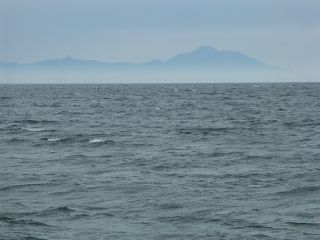  We went on a more difficult (but not excessively difficult) hike next to a bunch of lakes, in the middle of the peninsula, just off of the road to Rausu. It was quite a nice hike, with a little snow but not so much as to prevent us from continuing. We got to the end, a large lake with mountains on the opposite side, looked around briefly, saw a bear, and scurried back to our car ringing our bear-bell furiously. :-> 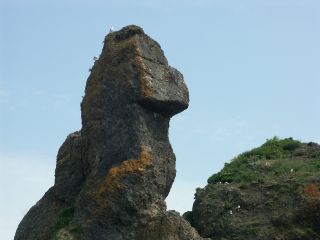 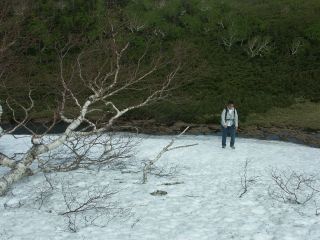 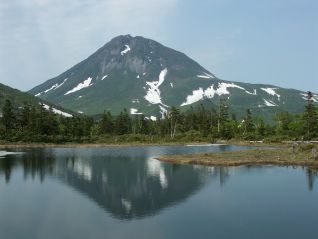 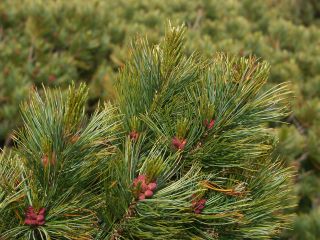 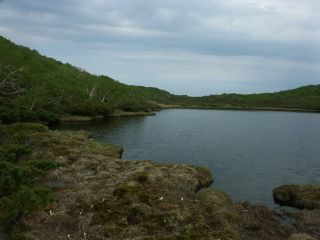 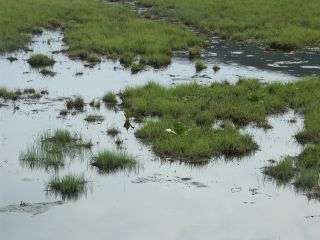 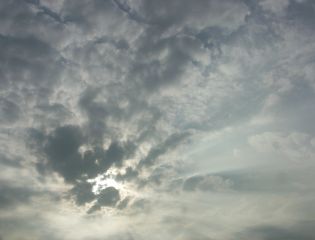 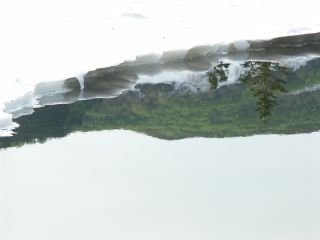  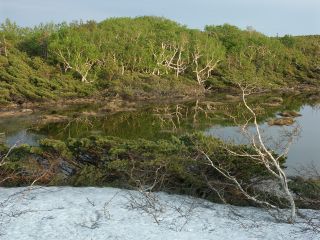 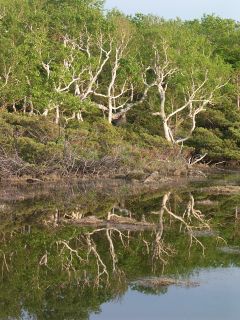 Now these are photos from various spots, driving on the north (Utoro) side of the peninsula. The shot of the bear was taken when it was about five meters from our car and rapidly approaching; I snapped the picture and floored it, and luckily it came out reasonably well -- in focus, at least. 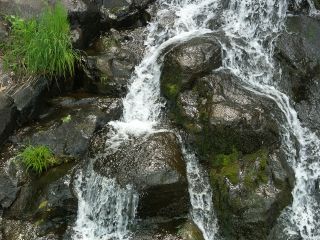 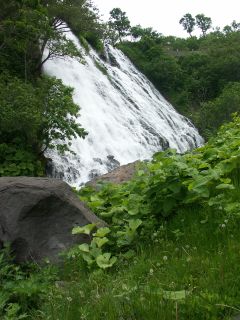  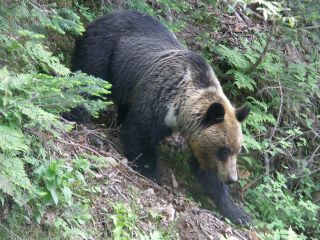 The next day we drove to the south (Rausu) side of the peninsula and explored a bunch by car. It's mostly a fishing area, with only a little tourism (mostly by Russians, as far as we could tell; even some signs were in Russian there). The first three photos are taken in the vicinity of a lighthouse on the coast that we found a road to, and which had a few small trails around it. The slimy stuff is unidentified slimy stuff I saw while we were tide-pooling a bit on the shore.   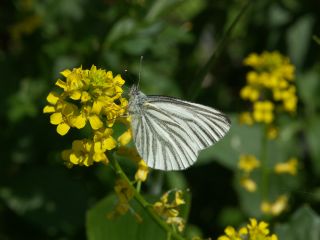 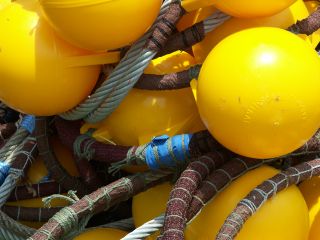 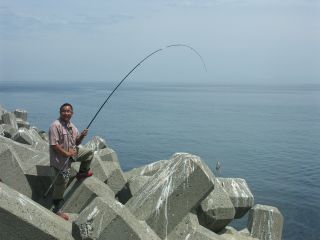  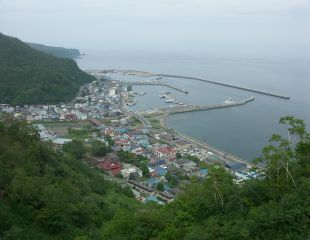 Here we arrived at a small shrine of some sort on the roadside. We parked, for other reasons, and were drawn in by a man gesticulating wildly to us. He convinced us to follow him into the entrance of a cave nearby, where we saw a curious sort of reflective moss on the rocks. The reflection is of the light from the cave mouth, and is very directed; move your head a few inches to the side and the effect vanishes. I took a few photos of the area of the shrine as well; I particularly liked the sake bottle balanced above the waterfall in what appeared to me to be a sort of libation. 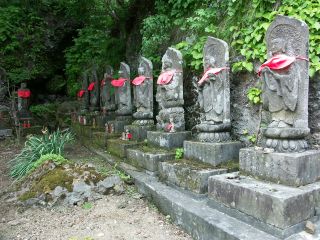 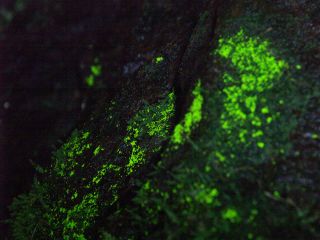  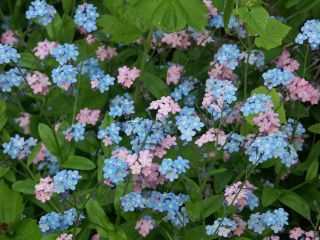 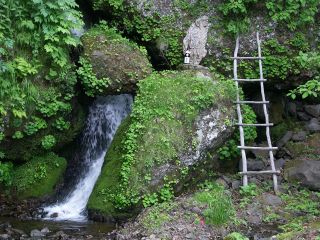 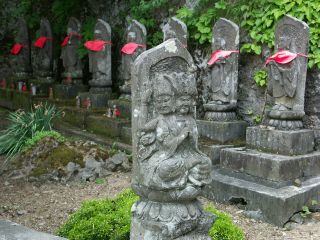 We returned to the vicinity of the aforementioned lighthouse later in the day, to walk around a bit more when the sun was lower in the sky, as we had realized earlier that we were rapidly burning to a crisp (or I was, anyhow). Just two more photos, but we walked a bit more as well, until the trail we were on kind of petered out anticlimactically.  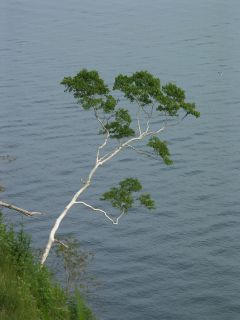 We got back into Rausu after these adventures, only to find that the town was in full swing with their own Yosokoi-style festival that, once again, we had stumbled onto out of sheer luck. So we hung about there and ate all sorts of street-fair-style food (I tasted seal, in fact, which was a lot like beef). A Shinto ceremony was being performed for various official-looking personages off to one side, while the middle area was full of people eating, playing carnival games, buying kitschy toys, and selling fresh-caught seafood. The first shot is of a dried salmon steak; later on are scallops (hotate) and sea urchins (uni). 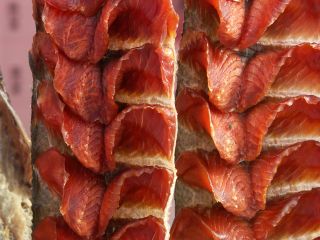 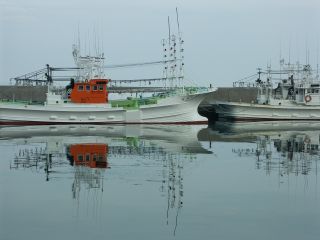      As mentioned, this was a Yosokoi-style festival, and that includes costumed dancers in the streets! 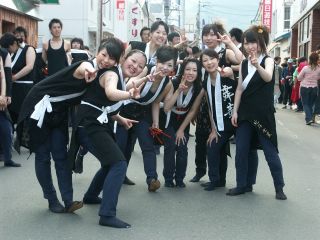 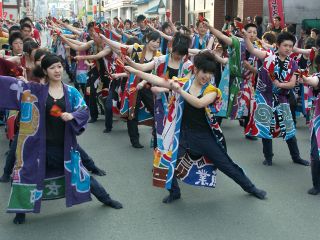 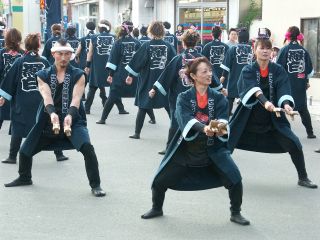 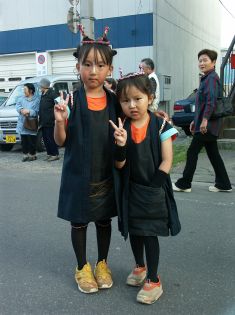 Now a pair of sunset photos, heading out of Rausu back to Utoro. In the first photo, I am struck by how Native American the design, on the streetlight posts in Rausu, looks; perhaps there's something to this whole Bering land bridge thing. :-> Seriously, it was a point of fascination for me to compare how the traditional art in Japan (we visited several Ainu museums during our travels) looked similar to Maori designs sometimes, and similar to Native American designs at other times. 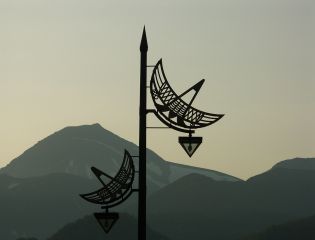 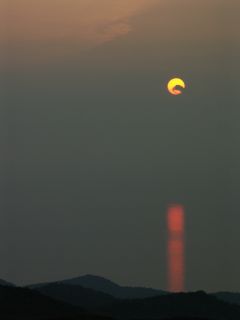 This is a curiosity that we never quite pinned down. This photo is taken into a fish tank in the lobby of the hotel we stayed at in Utoro; the swimming creature is perhaps two centimeters long, with a translucent body with opaque red parts inside. It has little wings on its side which flap very rapidly and propel it quite slowly. It looked like a cross between a jellyfish and a baby ray. We saw these guys only one other time: packaged up as food, promoted as being good for snacking on at your next cocktail party. If anybody reading this knows what they are, please write me; I'd love to know. If anyone has ever eaten one, I'm curious to hear about that too. :->  Deer, the morning we headed out. We drove around all day, ended up in Abashiri, and flew out the next morning. Abashiri is a pit, by the way; to be avoided at all costs. We knew that, which is why we drove around all day before going to our hotel; but even the few hours we had to spend there were a depressing ordeal. 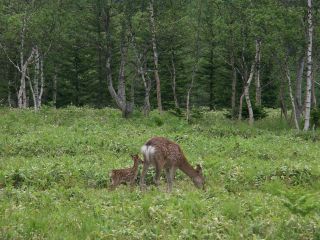 A poster from a salmon museum we stopped at, south of Shiretoko on the east coast. A big Russian tour group came through while we were there, and it is worth noting that not only were some signs in Russian in that area, but this poster is in Russian as well as English and Japanese, too!  Three from a drive we did down a long, thin strip of land separated from the coast; miles of road with only a few dozen meters of land on either the left or the right. It was a beautiful place, with flowers everywhere, the first proper sand beaches I've seen anywhere in Japan, and in a particularly Japanese moment, a trio of cranes stalking through the peaceful water. Thus ended our trip. 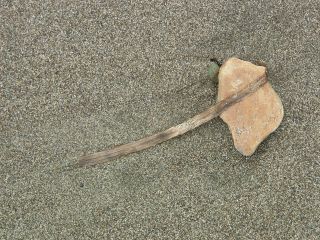  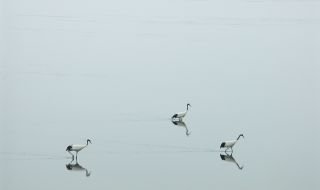 Part 12: There is no part 12. |
|||||